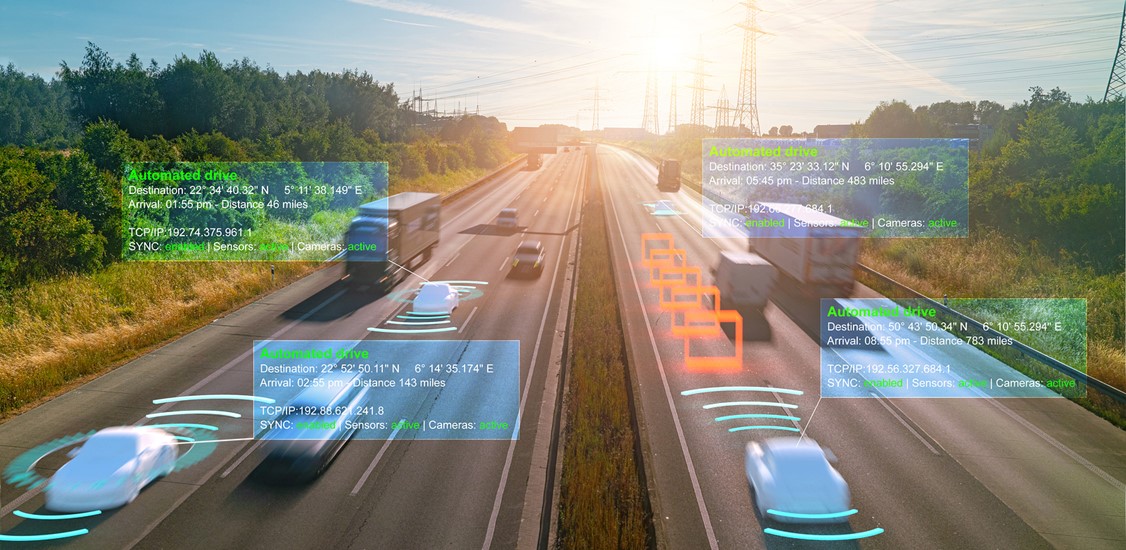Advanced technologies and data have become increasingly crucial to the way we live our lives and operate in the world. Whether we’re talking about connected public transit today or self-driving rideshares in the future, all modes of autonomous transportation will require massive amounts of data processing to ensure safety from start to finish. Data collected from sensors, cameras, radars, LiDAR and similar technology enable situational awareness for autonomous vehicles and are powering autonomous features today. But technologies like 5G are poised to help fleets of vehicles communicate better, detect risks and react in near-real time while using fully autonomous intelligent transportation systems.
As automotive technology becomes more advanced, connected and autonomous cars are expected to become more widespread, so safety becomes paramount. This is where technologies like 5G, mobile edge compute (MEC) and hyper precise location with Real Time Kinematics (RTK) come into play. These technologies can enable connected and autonomous vehicles to process large volumes of data, allowing them to anticipate risk, react in near-real time, and operate safely. These capabilities will be essential to the broad adoption of driverless transportations systems and the protection of our drivers, vulnerable road users and communities.
5G and MEC: the underlying network ‘highway’ for data
Why are data storage and transmission speed so crucial to the operation of connected and autonomous vehicles? Simply put, connected and autonomous vehicles must process large amounts of data to operate safely, and they need to be able to transmit that data quickly. Autonomous vehicles produce an estimated 30 terabytes of data daily, 5G and MEC will be the network ‘highways’ by which data produced by vehicles travels and will help enable broader implementation of autonomous mobility.
For autonomous and connected vehicles, a high data transmission speed is crucial to communication. The 5G network provides higher transmission speeds, lower latency (responsiveness) and more bandwidth (the ability to transmit more data). Having a network that can transmit, store and process the massive data loads of an autonomous transportation system is key, but latency in particular will help secure safety. A vehicle's surroundings can change in an instant, so it’s important that this information gets delivered and processed in near-real time. A network with high latency will impact the reaction speed of a driverless vehicle, which could lead to negative outcomes.
Mobile edge computing is another crucial component to processing the data from connected and autonomous vehicles in near-real time. MEC brings technology resources that are stored in the cloud closer to the end user. Instead of sending data to an often distant data center for processing, data is processed and stored at the network's edge, closer to the vehicle, to further reduce latency.
We’re already seeing self-driving cars on the road today. 5G and MEC enable smooth Vehicle-to-Everything (V2X) communication, which is crucial for not just one car but highways full of autonomous passenger and commercial vehicles. For example, if a car suddenly stops or a bicyclist suddenly turns a corner, the technology available today may not be fast enough to safely navigate these unexpected events and quickly share data with other vehicles on the road. 5G and MEC will underpin the processing of that data so vehicles can mimic human reaction speeds and avoid potential collisions.
Hyper precise location technology: mimicking human perception
Hyper precise location technology solutions consist of a host of technologies and data, including Real Time Kinematics (RTK) and high definition mapping, that work together to provide higher levels of location accuracy and advanced information about a surrounding environment. The most prevalent location technology today is the Global Positioning System (GPS), and it has an accuracy level of three to nine meters. Hyper precise location technologies provide accuracy of one to two centimeters, much closer to what is needed to simulate human perception.
Hyper precise location technology is a critical component for detecting pedestrians, other vehicles, bicycles and road obstructions. It can also help vehicles correctly and quickly navigate road and highway lanes. Imagine a driverless car in the fog or rain where the vehicle’s sensors are impaired. Hyper precise location technology leveraged at the edge of the network, in concert with smart road infrastructure, like pavement sensors, could help a driverless car navigate when its ‘sight’ is compromised.
Ultimately, with hyper precise location technology, autonomous vehicles will have a lower margin of error, and thus avoid potential safety hazards. Working in concert with the low latency of 5G of MEC, the data from hyper precise location technology can be transmitted in near-real time.
Keys to a safer, autonomous future
Our world is becoming more autonomous, and the success of these advancements hinge on advanced technology that will lay the groundwork not just for autonomous vehicles, but an autonomous future. The underlying network will play a critical role in safely realizing the promise of autonomous transportation systems. With 5G, MEC and hyper precise location technology solutions, autonomous vehicles are one step closer to mimicking the driving patterns of human drivers, advancing safety and keeping the industry moving forward.


















